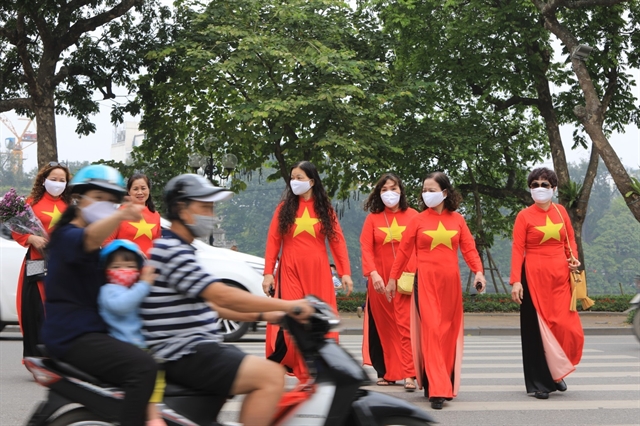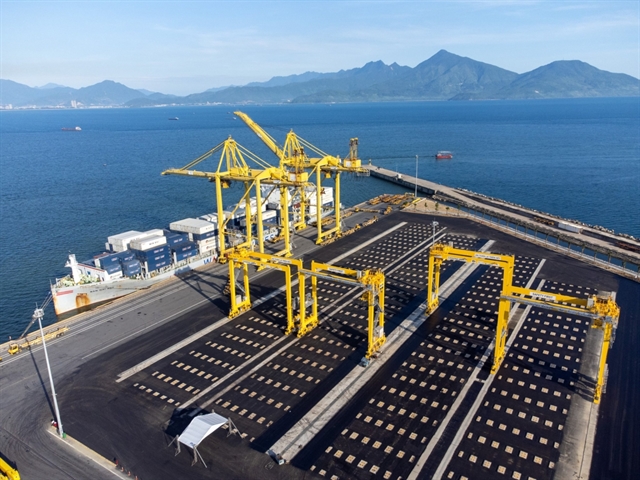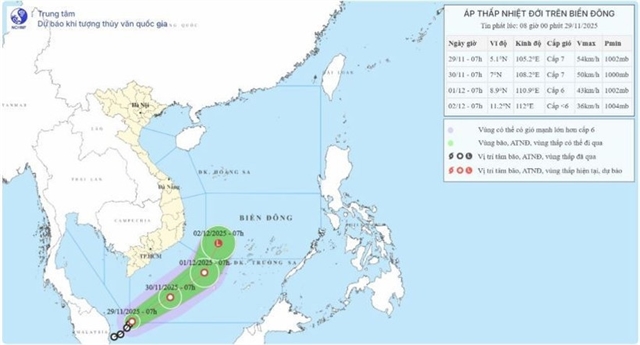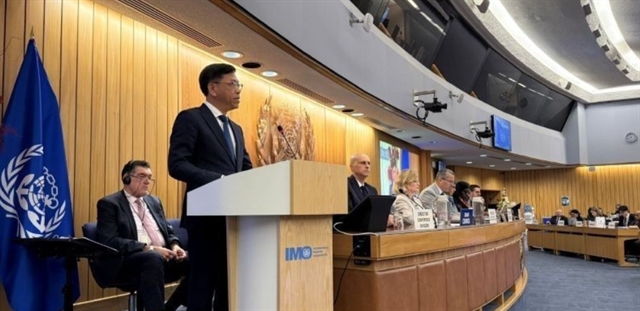 Opinion
Opinion

Infectious disease doctors discuss the COVID-19 pandemic situation in Việt Nam and how it differs from other parts of the world with Sức khoẻ & Đời sống (Health & Life) newspaper under the Ministry of Health

|
| People wear masks while celebrating National Reunification Day (April 30) in Hà Nội's Hoàn Kiếm District, a week after the Government relaxed strict social distancing orders. — VNA/VNS Photo Thành Đạt |
Infectious disease doctors discuss the COVID-19 pandemic situation in Việt Nam and how it differs from other parts of the world with Sức khoẻ & Đời sống (Health & Life) newspaper under the Ministry of Health
Where is Việt Nam standing in the global COVID-19 pandemic?
Trương Hữu Khanh, Head of the Department of Infectious Diseases at HCM City Children's Hospital No.1
We are in a situation where other countries in the region are still reeling from the pandemic, while there is still a risk that there are undetected cases in the community.
We need to carry out strict quarantining of all arrivals to prevent the virus from being reintroduced into the country, while preventive measures should still be observed to prevent community transmissions.
Lê Quốc Hùng, Head of the Department of Tropical Diseases, Chợ Rẫy Hospital
Việt Nam was one of the earliest countries to report a COVID-19 patient after the outbreak began in Wuhan, China. We have successfully contained the outbreak during the initial stage – when the epicentre remained in China – and managed to keep the caseload low and no deaths. After that, we witnessed a period of community transmission – with confirmed cases having no foreign travel history or contacts with other positive cases – which means anyone could be a virus carrier. Not to mention other complicating issues regarding the characters of the novel strain of the coronavirus such as asymptomatic transmission, incubation period lasting longer than 14 days, or reports of patients testing positive again after being declared recovered, while there is still no definitive cure or vaccine for the virus yet.
So has Việt Nam passed the peak already?
Trương Hữu Khanh
Việt Nam did not let the outbreaks go unchecked at any time so we haven’t really had a peak like other worse-hit countries have seen. There is no peak to overcome. We have contained and controlled the spread of the virus since the very beginning.
The epidemic data line representing the virus-infected caseload of Việt Nam rose slowly due to robust intervention and mitigation.
Nguyễn Thanh Phong, Head of the Department of Infectious Diseases, HCM City’s Hospital for Tropical Diseases
Việt Nam currently has a very limited number of cases compared to other countries, and so far, we haven’t recorded any deaths but the outbreak still contains many uncertainties.
There’s much talk about “flattening the curve,” how should we understand this issue?
Trương Hữu Khanh
The case counts and death situation in the US or in Europe, for example, keep increasing, therefore, they need to implement measures to really slow the spread of the virus – the epidemic curve instead of rising upwards fast will slowly plateau and then decline, to afford more time for health care systems to properly respond and treat patients without being overloaded.
The world is expecting that if the outbreak shows no sign of abating – meaning the epidemic curve remains largely unchanged – even when summer comes in the northern hemisphere, then a vaccine will be critically needed, likely in September.
Are there any credible predictions on when the pandemic could draw to a close?
Trương Hữu Khanh
First, Việt Nam has implemented preventive measures very well, which have paid off in the ongoing streak of no new domestic cases. However, if we neglect the precaution measures, COVID-19 could still have plenty of chances to come back and then, there we might actually need to have actual discussions on flattening the curve.
There’s still no definite proof on the impacts of the weather or climate conditions on the novel coronaviruses’ viability.
Lê Quốc Hùng
What we can hope for is that, during its life cycle and transmission through human populations, the novel coronavirus might mutate to become less virulent strains in the future. Therefore, the longer social distancing measures and limitations on direct contacts are in place, mutations have more time to occur and hopefully, this could result in the virus becoming less harmful.
Until there is a time where the virus still exists but it can no longer cause disease or only results in less serious illnesses like what is brought by the seasonal flu.
Nguyễn Thanh Phong
During all scenarios, we must not be complacent or reckless with the virus because the pandemic situation remains complicated and unpredictable, with many unknown factors at the moment. The sense of responsibility and civic duty of each citizen in a community, I think, remains an important condition for our eventual triumphant against outbreaks. — VNS




